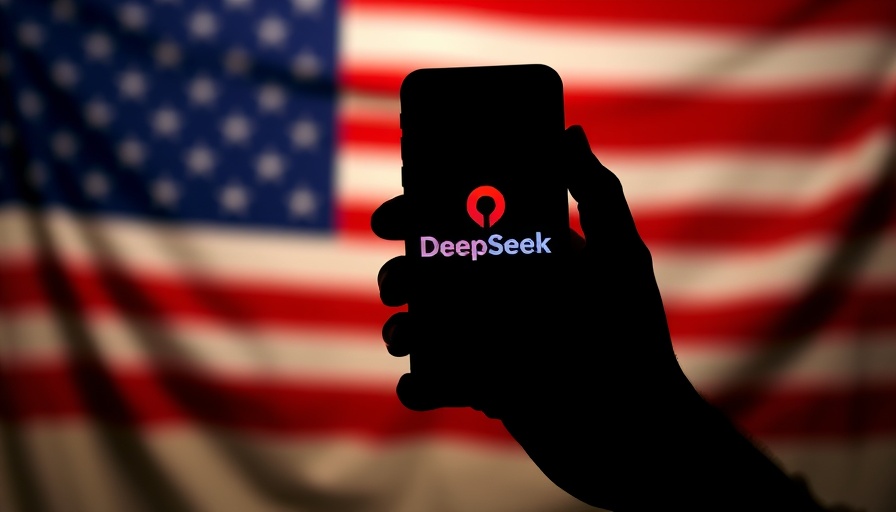
Navigating the Perils of DeepSeek: A New Era in AI Competition
DeepSeek has recently emerged in the AI scene, generating both excitement and concern among experts and the general public alike. Touted for its ability to deliver artificial intelligence solutions more affordably and efficiently than its U.S. counterparts, DeepSeek raises a red flag for national security. Countries including Italy, Taiwan, Australia, and South Korea have blocked or limited its use on government devices as a reaction to potential security risks, a trend that reflects growing unease towards AI models emerging from China.
The Shift in AI Leadership and Its Implications
The introduction of DeepSeek coincides with a significant shift in the U.S. political landscape concerning AI leadership. With President Trump in office, the administration is reconsidering previous policies surrounding AI regulation, aiming for a more aggressive stance towards innovation. This push for rapid advancement complicates the landscape for ensuring safety and stability amidst technological progress. DeepSeek, with its concerning vulnerabilities, may test the balance between fostering innovation and safeguarding national interests.
Open Source Model: A Double-Edged Sword
The open-source nature of DeepSeek allows wide accessibility for modifications, which, while promoting innovation, simultaneously creates significant risks. Open-source models offer the potential for rapid development and collaborative improvement, but they also enable malicious actors to exploit loopholes in safety mechanisms. The lack of robust safeguards in DeepSeek renders its design particularly susceptible to manipulation, unlike its competitors like OpenAI’s GPT-4o, which implemented stringent security measures to counteract such threats.
Comparative Analysis: DeepSeek Versus U.S. AI Frameworks
Designed without the levels of oversight present in Western AI models, DeepSeek’s design flaws become apparent when viewed against its competitors. A Cisco study demonstrated that DeepSeek was vulnerable to harmful prompts that its security systems failed to block. In contrast, OpenAI’s model successfully intercepted 86% of these harmful attempts. This stark difference indicates a critical vulnerability in DeepSeek, raising concerns about the potential for misuse and mismanagement, which could have cascading effects on global cybersecurity.
A Future Wrought with Challenges and Opportunities
The rapid advancement in AI technologies, particularly through models like DeepSeek, renders it crucial for nations to adopt a strategic viewpoint on AI management. While the quest for technological superiority is ongoing, it is imperative to embed ethical considerations and security measures from the onset. As we look toward the future, the trajectory carved by models like DeepSeek could dictate who holds the reins in AI leadership—ushering either progress or peril.
Addressing Misconceptions: The Truth About Deep Seek
It’s essential to clarify common misconceptions surrounding the capabilities and risks of DeepSeek. Many may see its functionality as a mere rival to Western AI technologies without acknowledging the underlying implications of its open-source design. Such misunderstandings impede the ability to enact informed regulations that could ultimately safeguard cyber safety. By fostering an informed dialogue around these technologies, policymakers and industry leaders can navigate the choppy waters of AI development.
Understanding the Stakes: What Stakeholders Should Know
For businesses, tech design teams, and policymakers, understanding the implications of adopting solutions like DeepSeek is paramount. The vulnerabilities inherent in its architecture pose risks that extend beyond individual applications, impacting corporate and governmental cybersecurity at large. Stakeholders must remain vigilant, weighing the potential benefits against the substantial risks that new AI models bring to the table.
In conclusion, while innovation in AI is vital for progress, the emergence of DeepSeek emphasizes the critical need for vigilance and dialogue about ensuring safety and security in cyberspace. Evaluating such technologies against ethical standards and security protocols will be essential for fostering a responsible AI ecosystem.
 Add Row
Add Row  Add
Add 




Write A Comment